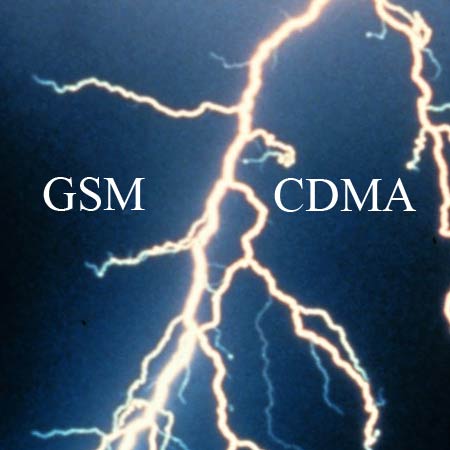 LIFO and FIFO are terms commonly used in inventory control, in cost accounting and in computer science. They all stand for literally the same phrases, but it means something different in each application.
LIFO and FIFO are terms commonly used in inventory control, in cost accounting and in computer science. They all stand for literally the same phrases, but it means something different in each application.In inventory control, they simply mean how you handle your merchandise. Do you restock the shelves by pushing the old items back to make room for new items of the same kind? Then the last items stocked will be the first items sold, or LIFO. This would be a typical stocking method for items that have no 'sell-by' date associated with them, or at least one that is in the distant future, such as canned good. Perishable items such as milk and eggs are restocked from the back, so that the old items are pushed to the front and are the first selected by shoppers; this is a FIFO restocking method. This is why most convenience stores have walk-in coolers behind their cold displays, so that they can stock from the rear.
Obviously, you can handle some merchandise LIFO and some FIFO, depending on what it is and how fast you have to move it.
In accounting, LIFO and FIFO mean two different ways of setting a value on your existing inventory and calculating your profit. Some retailers stock an individual type of item only once and then when it has sold out, they no longer carry it; ephemeral fads and fashions are examples of stock-once items. So they pay the same price for each unit of that particular item, and have no decision to make when valuing their inventory. Most retailers, however, stock a particular item for some time, replenishing their supply as they run low. The price on the item fluctuates with time, usually going up, alas. So the newest items you purchase may cost more (or less) than the ones you have had for awhile.
Of course you may adjust your selling price on the item, but what does the increase in unit cost do to the value of your existing inventory? If you had to replace it all, you would now have to pay the higher price (or rarely, get to pay the lower price). Is your inventory system sophisticated enough to be able to determine which purchase lot each unit in stock was a part of? If not, you have to select an inventory evaluation method, either FIFO or LIFO.
The choice between LIFO and FIFO can have a significant effect your P/L (Profit/Loss) statements. It is probably wise to pick a particular method and stick to it so there are not wild fluctuations in your numbers. Also note that some evaluation methods are not allowed for tax purposes. You should obviously not make a decision to use LIFO or FIFO cost accounting and inventory valuation without first consulting with an accountant and/or a tax attorney.
In computer science - LIFO and FIFO refer to how requests or intermediate results are stored and dealt with. If requests are handled on a first-come-first-served basis, the date store is called a 'queue'. If requests are handled Last-In-First-Out, the structure is called a 'stack'. Different operations require different data handling. The LIFO-FIFO terminology, originating in business and adopted by the computer industry, led to the addition of a third term for data storage; to wit: GIGO. Garbage in, garbage out.
Read More...
 In cellular service there are two main competing network technologies: Global System for Mobile Communications (GSM) and Code Division Multiple Access (CDMA). Cellular carriers including Sprint PCS, Cingular Wireless, Verizon and T-Mobile use one or the other. Understanding the difference between GSM and CDMA will allow you to choose a carrier that uses the preferable network technology for your needs.
In cellular service there are two main competing network technologies: Global System for Mobile Communications (GSM) and Code Division Multiple Access (CDMA). Cellular carriers including Sprint PCS, Cingular Wireless, Verizon and T-Mobile use one or the other. Understanding the difference between GSM and CDMA will allow you to choose a carrier that uses the preferable network technology for your needs.
 If you are looking for a very small, very fragile, very light laptop, then Apple MacBook Air is for you. A slight tap on the screen will close the system down completely.
If you are looking for a very small, very fragile, very light laptop, then Apple MacBook Air is for you. A slight tap on the screen will close the system down completely. Too Big for a Small Business As businesses began to increase their focus on having reliable and available data centers, data centers began to grow in size and complexity. No longer a single room housing a comparatively simple computer system, businesses now required very large Internet data centers. These large data centers are expensive to run, expensive to maintain, and expensive to staff.
Too Big for a Small Business As businesses began to increase their focus on having reliable and available data centers, data centers began to grow in size and complexity. No longer a single room housing a comparatively simple computer system, businesses now required very large Internet data centers. These large data centers are expensive to run, expensive to maintain, and expensive to staff. Nowadays Internet is becoming one of the major needs of this contemporary world. Almost every work can be done online and it is preferred by people because it is time and cost efficient. It is one of the greatest blessings of technology.
Nowadays Internet is becoming one of the major needs of this contemporary world. Almost every work can be done online and it is preferred by people because it is time and cost efficient. It is one of the greatest blessings of technology.



